Abstract Expressionism in the United States emerged as a distinct art movement in the immediate aftermath of World War II and gained mainstream acceptance in the 1950s, a shift from the American social realism of the 1930s influenced by the Great Depression and Mexican muralists. The term was first applied to American art in 1946 by the art critic Robert Coates. Key figures in the New York School, which was the epicenter of this movement, included such artists as Jackson Pollock, Franz Kline, Mark Rothko, Norman Lewis, Willem de Kooning and Theodoros Stamos among others.

Willem de Kooning was a Dutch-American abstract expressionist artist. He was born in Rotterdam and moved to the United States in 1926, becoming an American citizen in 1962. In 1943, he married painter Elaine Fried.
The New York School was an informal group of American poets, painters, dancers, and musicians active in the 1950s and 1960s in New York City. They often drew inspiration from surrealism and the contemporary avant-garde art movements, in particular action painting, abstract expressionism, jazz, improvisational theater, experimental music, and the interaction of friends in the New York City art world's vanguard circle.

Leo Castelli was an Italian-American art dealer who originated the contemporary art gallery system. His gallery showcased contemporary art for five decades. Among the movements which Castelli showed were Surrealism, Abstract Expressionism, Neo-Dada, Pop Art, Op Art, Color field painting, Hard-edge painting, Lyrical Abstraction, Minimal Art, Conceptual Art, and Neo-expressionism.

The Gagosian Gallery is a contemporary art gallery owned and directed by Larry Gagosian. The gallery exhibits some of the most influential artists of the 20th and 21st centuries. There are 16 gallery spaces – five in New York City, three in London, two in Paris, and one each in Basel, Beverly Hills, Rome, Athens, Geneva and Hong Kong.
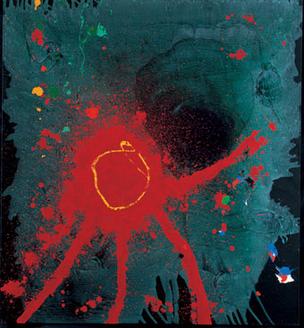
Lyrical abstraction is either of two related but distinct trends in Post-war Modernist painting:
Dan Christensen, was an American abstract painter He is best known for paintings that relate to Lyrical Abstraction, Color field painting, and Abstract expressionism.
Bradley Walker Tomlin belonged to the generation of New York School Abstract Expressionist artists. He participated in the famous ‘’Ninth Street Show.’’ According to John I. H. Baur, Curator of the Whitney Museum of American Art, Tomlin’s "life and his work were marked by a persistent, restless striving toward perfection, in a truly classical sense of the word, towards that “inner logic” of form which would produce a total harmony, an unalterable rightness, a sense of miraculous completion...It was only during the last five years of his life that the goal was fully reached, and his art flowered with a sure strength and authority."
Jan Müller was a New York-based figurative expressionist artist of the 1950s. According to art critic Carter Ratcliff, "His paintings usually erect a visual architecture sturdy enough to support an array of standing, riding, levitating figures. Gravity is absent, banished by an indifference to ordinary experience." According to the poet John Ashbery, Müller "brings a medieval sensibility to neo-Expressionist paintings."
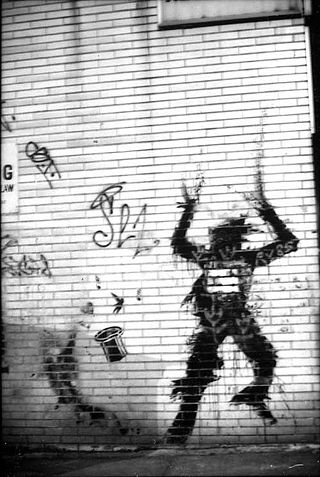
Richard Art Hambleton was a Canadian artist known for his work as a street artist. He was a surviving member of a group that emerged from the New York City art scene during the booming art market of the 1980s which also included Keith Haring and Jean-Michel Basquiat. While often associated with graffiti art, Hambleton considered himself a conceptual artist who made both public art and gallery works.
Irving Sandler was an American art critic, art historian, and educator. He provided numerous first hand accounts of American art, beginning with abstract expressionism in the 1950s. He also managed the Tanager Gallery downtown and co-ordinated the New York Artists Club of the New York School from 1955 to its demise in 1962 as well as documenting numerous conversations at the Cedar Street Tavern and other art venues. Al Held named him, "Our Boswell of the New York scene," and Frank O'Hara immortalized him as the "balayeur des artistes" because of Sandler's constant presence and habit of taking notes at art world events. Sandler saw himself as an impartial observer of this period, as opposed to polemical advocates such as Clement Greenberg and Harold Rosenberg.
Andy Valmorbida is an international fine art businessman. He is currently the president of Untitled-1 Holdings and is the founder of River-Labs, a company associated with the generative digital art movement.
Robert Goodnough was an American abstract expressionist painter. A veteran of World War II, Goodnough was one of the last of the original generation of the New York School;, even though he began exhibiting his work in galleries in New York City in the early 1950s. Robert Goodnough was among the 24 artists from the total of 256 participants who were included in the famous 9th Street Art Exhibition, (1951) and in all the following New York Painting and Sculpture Annuals from 1953 to 1957. These Annuals were important because the participants were chosen by the artists themselves. Early in his career starting in 1950 he showed his paintings at the Wittenborn Gallery, NYC. He had shown at the Tibor de Nagy Gallery in New York City from 1952 to 1970 and again from 1984 to 1986. In 1960 and 1961 he had solo exhibitions at The Art Institute of Chicago. A veteran of scores of solo exhibitions and hundreds of group exhibitions in the United States and abroad, Goodnough also had solo exhibitions in 1969 at the Whitney Museum of American Art in NYC and the Albright-Knox Art Gallery in Buffalo. A major work by Goodnough is included in The Governor Nelson A. Rockefeller Empire State Plaza Art Collection in Albany, NY. In later years his paintings were also associated with the Color Field movement.
Nanno de Groot was a self-taught artist. He belonged to the group of New York School Abstract expressionist artists of the 1950s. He wrote:
In moments of clarity of thought I can sustain the idea that everything on earth is nature, including that which springs forth from a man's mind, and hand. A Franz Kline is nature as much as a zinnia.

Marlborough Fine Art was founded in London in 1946 by Frank Lloyd and Harry Fischer. In 1963, a gallery was opened as Marlborough-Gerson in Manhattan, New York, at the Fuller Building on Madison Avenue and 57th Street, which later relocated in 1971 to its present location, 40 West 57th Street. The gallery operates another New York space on West 25th Street, which opened in 2007. It briefly opened a Lower East Side space on Broome Street.
Valerie Jaudon is an American painter commonly associated with various Postminimal practices – the Pattern and Decoration movement of the 1970s, site-specific public art, and new tendencies in abstraction.
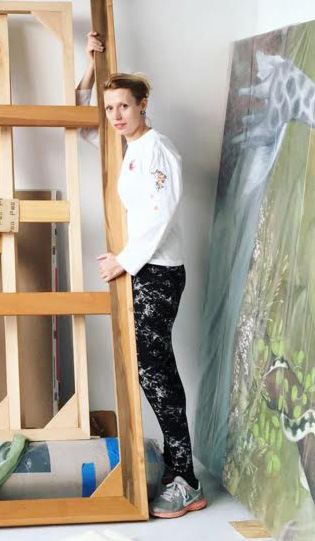
Katerina Lanfranco is a New York City-based visual artist making paintings, drawings, sculptures, and mixed media installations. She was born in Hamilton, Ontario. She studied art at the University of California, Santa Cruz where she received her B.A in Visual Art and in "Visual Theory and Museum Studies". She also attended the Sierra Institute studying Nature Philosophies and Religions while camping in the California wilderness. She received her M.F.A from Hunter College, City University of New York in Studio Art, with an emphasis in painting. In 2004, she studied at the Universitat der Kunst (UdK) in Berlin, Germany on an exchange scholarship. During this time, she also received a travel grant to study Baroque and High Baroque painting in Italy.
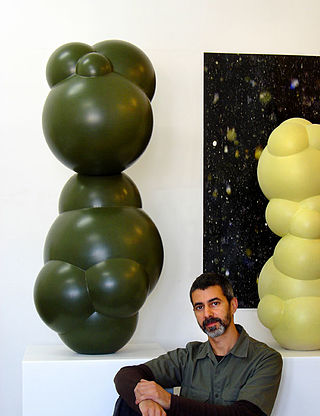
David Fried is an American interdisciplinary, contemporary artist.

Sharon Gold is an American artist and associate professor of painting at Syracuse University. Gold's artwork has been installed at MoMA PS1, Dia Art Foundation, Carnegie Mellon University, Rose Art Museum at Brandeis University, Everson Museum of Art, and Princeton University Art Museum. She was a fellow at MacDowell Colony. Gold's work has been reviewed by Arthur Danto, Donald Kuspit, Ken Johnson, and Stephen Westfall in a variety of publications from Artforum to the New York Times, New York Magazine, Arts Magazine, Art News, and many others. She also taught at Princeton University, Pratt Institute, Virginia Commonwealth University, University of Texas at San Antonio, San Francisco Art Institute, and the Tyler School of Art. Gold received a National Endowment for the Arts fellowship and wrote for Re-View Magazine, M/E/A/N/I/N/G/S, and Artforum. Her artwork spans across minimalism, monochromatic abstraction, geometric abstraction, and representational painting and is conceptually informed by structuralism, existential formalism, and feminist theory.
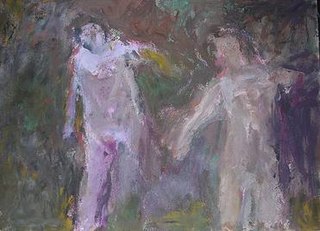
Milton Resnick was an American artist noted for abstract paintings that coupled scale with density of incident. It was not uncommon for some of the largest paintings to weigh in excess three hundred pounds, almost all of it pigment. He had a long and varied career, lasting about sixty-five years. He produced at least eight hundred canvases and eight thousand works on paper and board.










